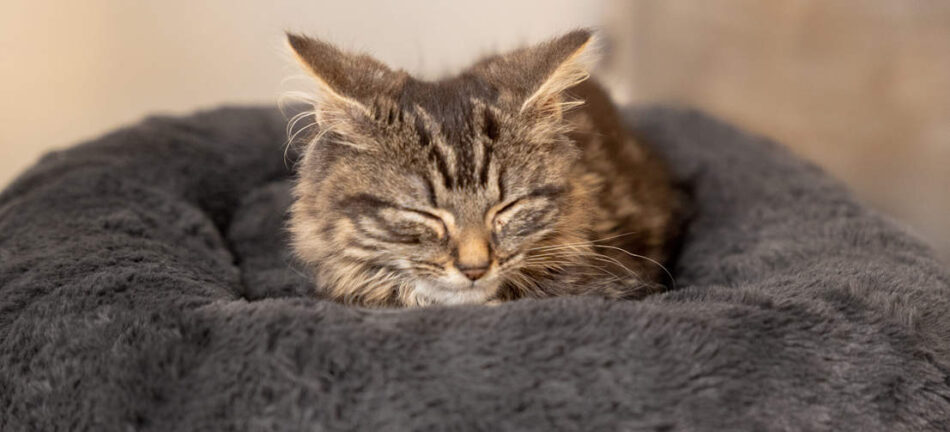10 Things You Might Not Know About Cat Whiskers
Have you ever taken a look at your cat’s whiskers and wondered why they’re there? Or why one cat’s whiskers are shorter than another’s? Read on to find out 10 things you might not know about cat whiskers.
1. Your cat’s whiskers can tell you how they’re feeling
Did you know that your cat’s whiskers can give you an insight into their emotions? A happy cat’s whiskers will be relaxed and slightly to the side, whereas a cat on high alert or hunting prey will have fanned out whiskers that are pulled forward. A fearful or shy cat, on the other hand, will try to make their face look smaller by pulling their whiskers back.
2. Cats are born with 24 whiskers
Cats are born with around a total of 24 mystacial whiskers – that’s 12 on each side of their face. This number will stay the same for the rest of a cat’s life!
3. Whiskers are connected to a cat’s nervous system
Whiskers are also called vibrissae, which means to vibrate. And because a cat’s whiskers are connected to their nervous and muscular system, this makes them highly sensitive. Therefore, when brushed against something, causing a vibration, whiskers will send signals to your cat’s brain to help them to navigate the world.
4. The world record for the longest cat whiskers is 7.5 inches!
In 2005, Missi the Maine Coon from Finland achieved the world record for the longest cat whiskers at 7.5 inches long! To put this into context, the average cat whisker only measures at around 3 inches. However, generally speaking, longer haired cat breeds do tend to have longer whiskers.
5. Whiskers can make cats better hunters
Whiskers can help a cat when it comes to hunting their prey. Initially, a cat’s whiskers will determine whether they will be able to squeeze into an enclosed space to make their catch. Their whiskers will then help them to identify the shape of their prey, allowing them to bite in the perfect spot.
6. Whiskers help protect cats’ eyes
Just like our eyelashes, a cat’s whiskers also have the purpose of helping protect their eyes from dust and debris.
7. Cats have whiskers on the back of their legs
Whiskers aren’t just found on a cat’s face! Cats also have whiskers on the back of their front legs. These are known as carpal whiskers. Although they may appear to look like fur, carpal whiskers help with spatial awareness and hunting.
8. Sometimes mother cats chew off their kitten’s whiskers
If you’ve ever had kittens, you might have noticed a kitten’s whiskers being chewed off by their mother or even their littermates. Most commonly, cats do this either out of habit, as a sign of stress, boredom, or excessive grooming. To prevent unwanted behaviours, cats should be provided with a range of boredom busting cat toys to keep them both mentally and physically stimulated.
9. Cats shed their whiskers
You’ll no doubt have found your cat’s fur lying around the home, but what about their whiskers? Cats usually shed between 1 and 3 whiskers a year, which is nothing to be concerned about. However, if you notice excessive whisker shedding, this could indicate what’s likely a skin or stress issue, so should be looked at by your vet.
10. Your cat’s whiskers can change colour!
As your kitty ages, you’ll probably notice their whiskers changing, or losing, colour along with the rest of their coat. Depending on their breed, their whiskers will usually turn grey or black.
If you enjoyed finding out 10 things you might not know about cat whiskers, find out some more fascinating facts on cat’s whiskers and their senses in our previous blog The Seven Fascinating Senses of Cats.
This entry was posted in Cats


One reply on “10 Things You Might Not Know About Cat Whiskers”
Interesting!